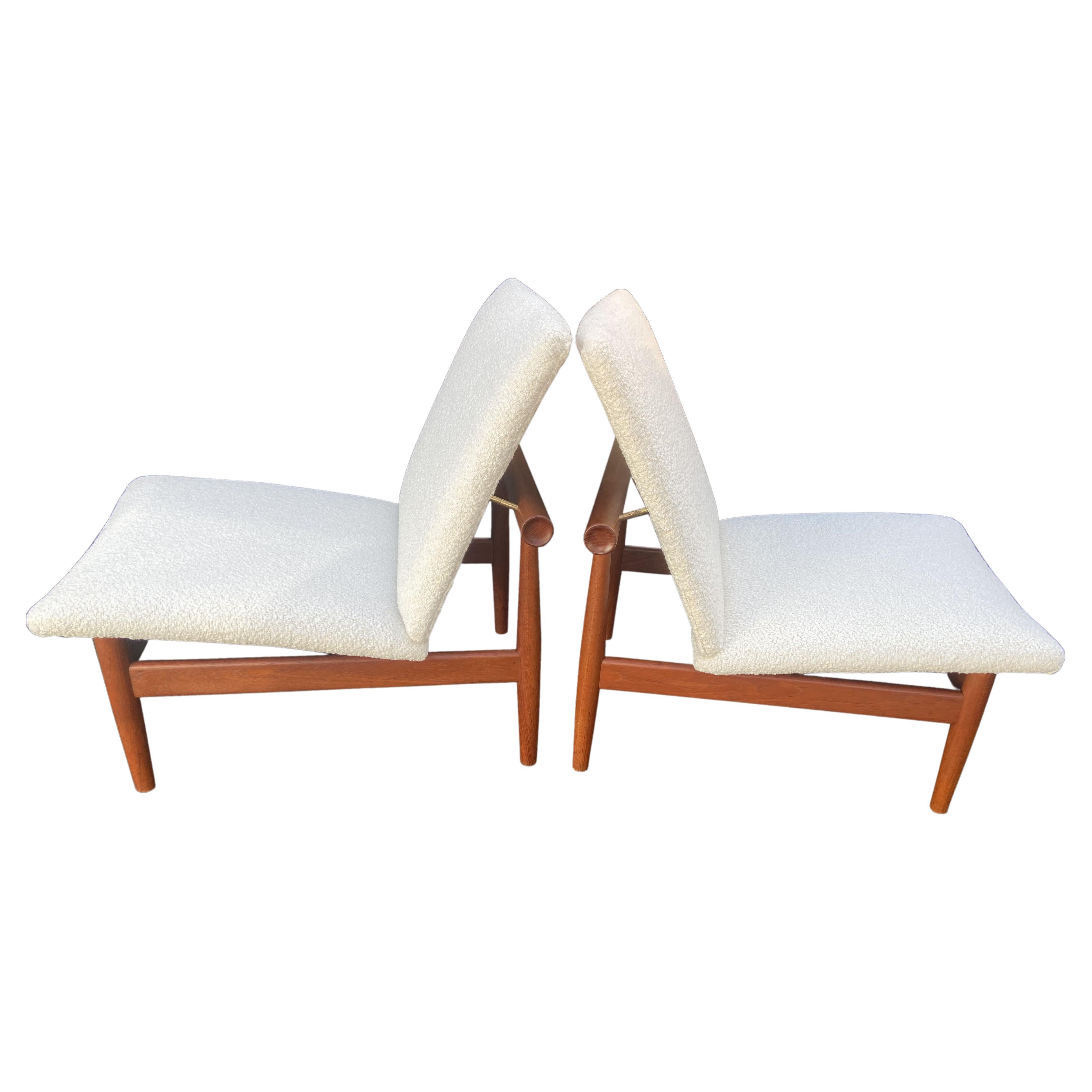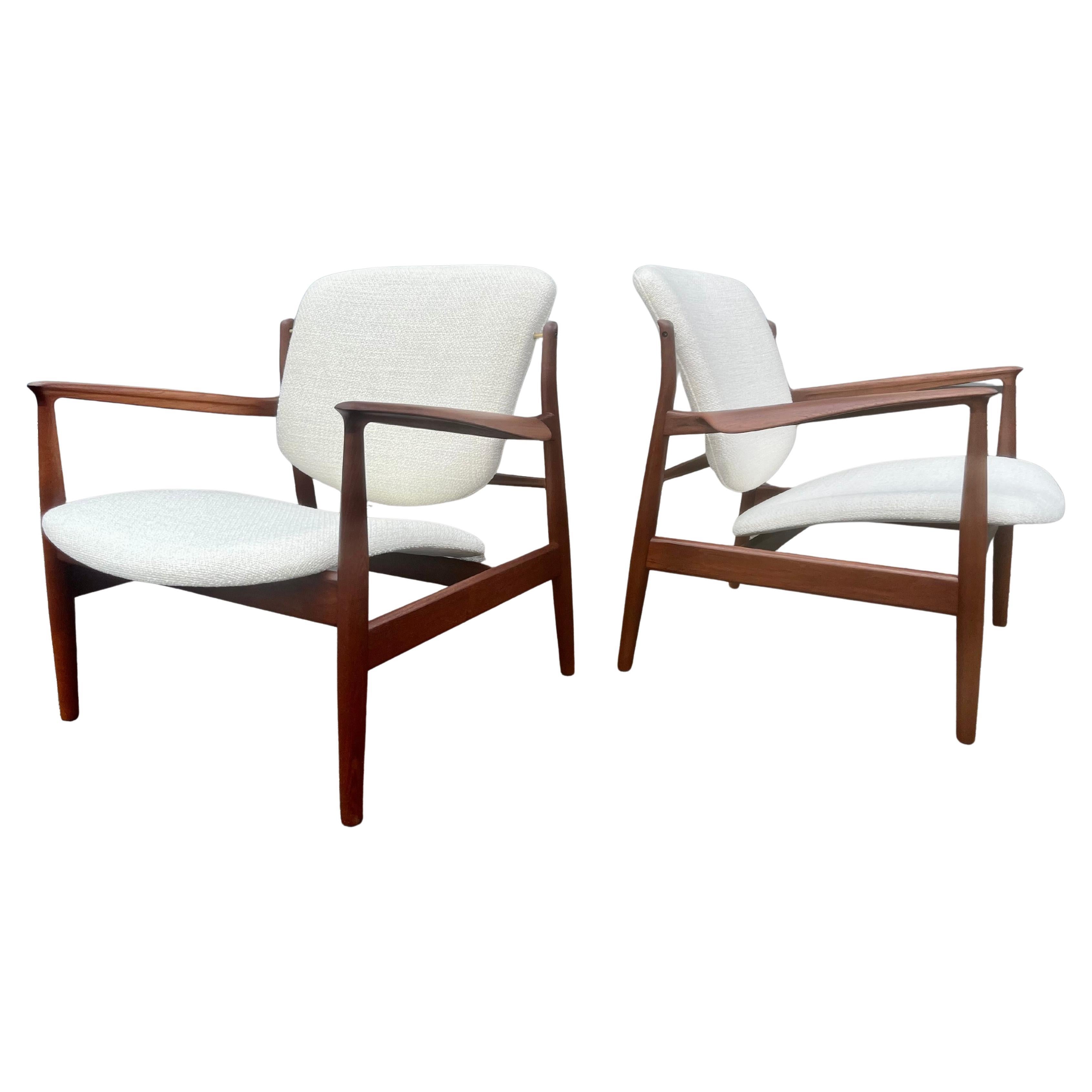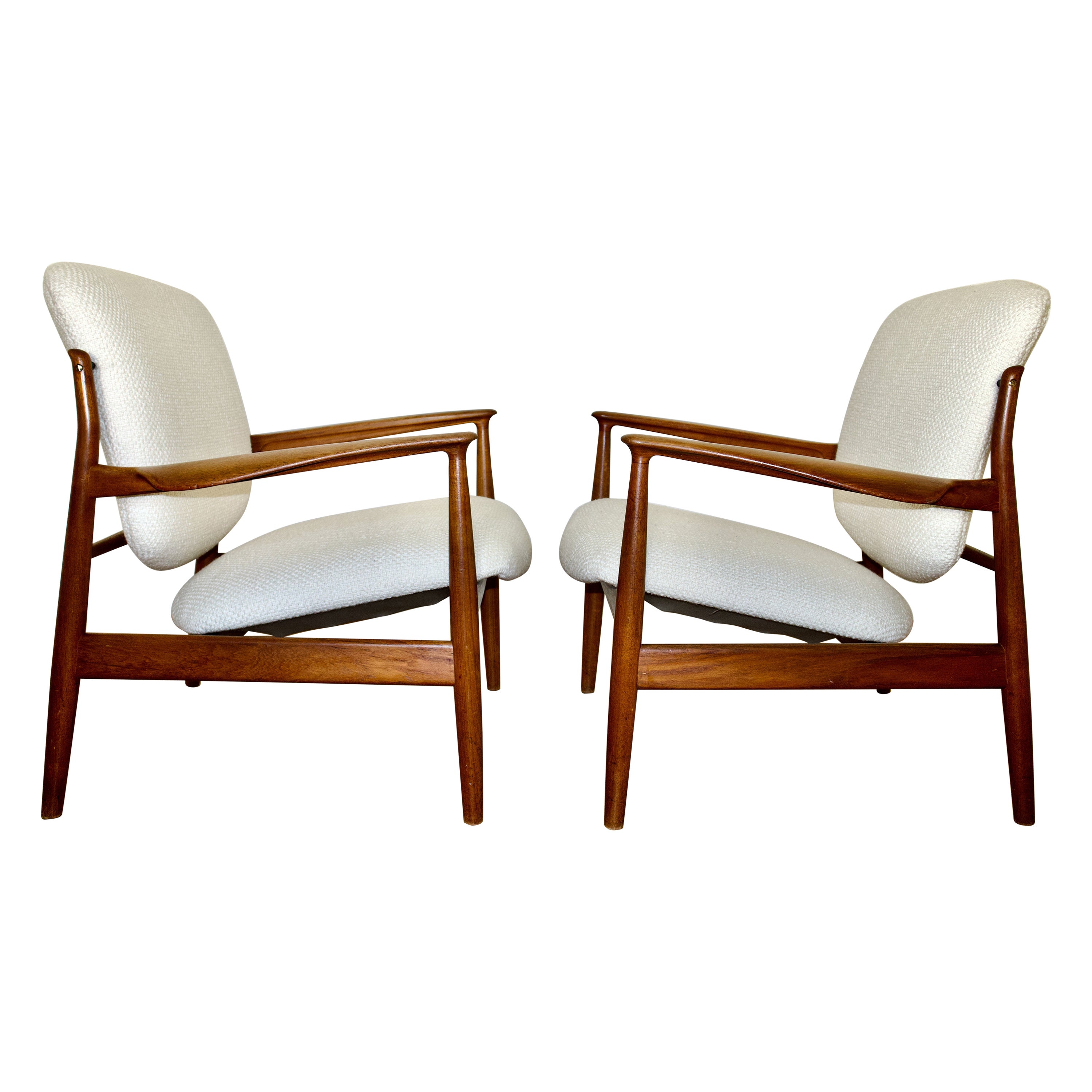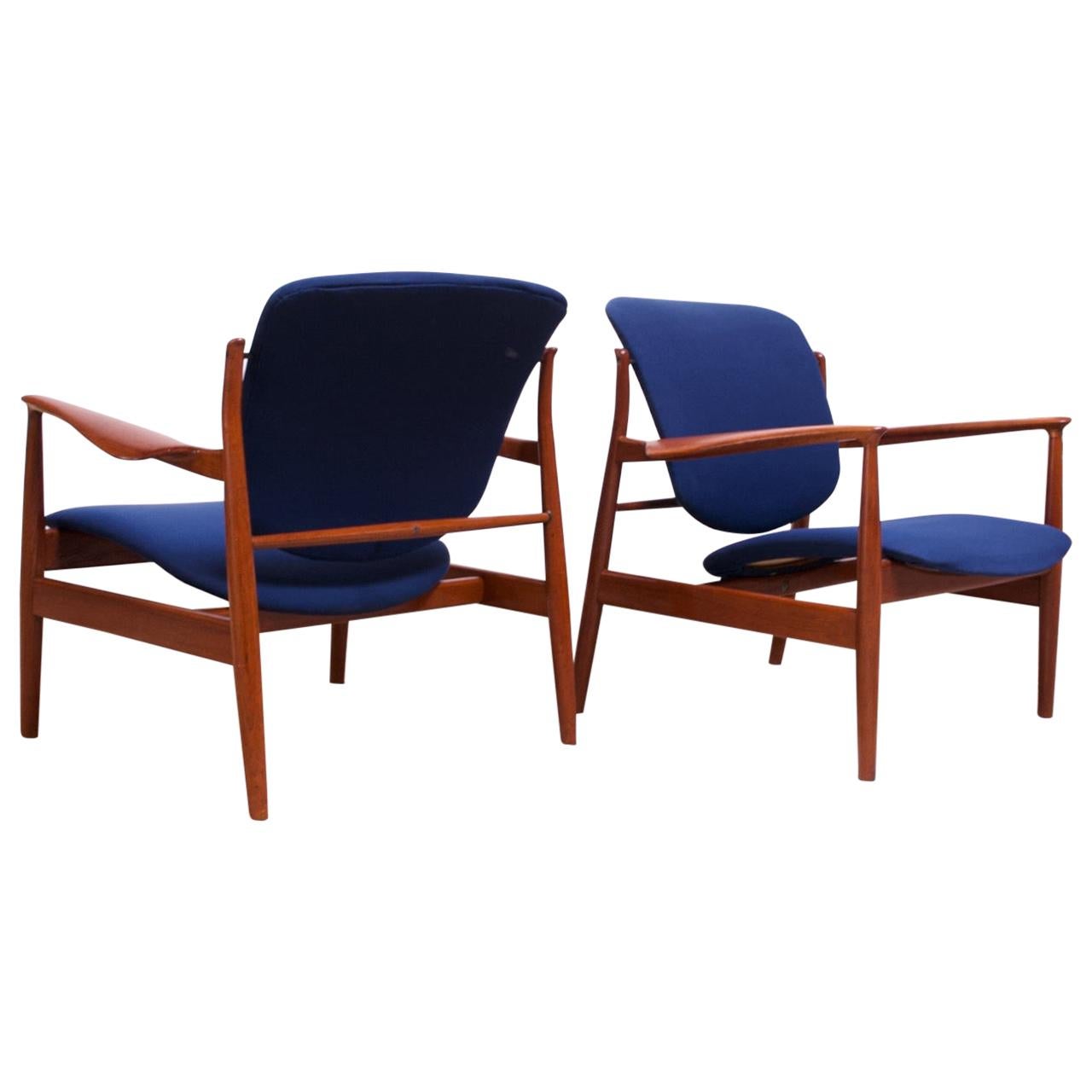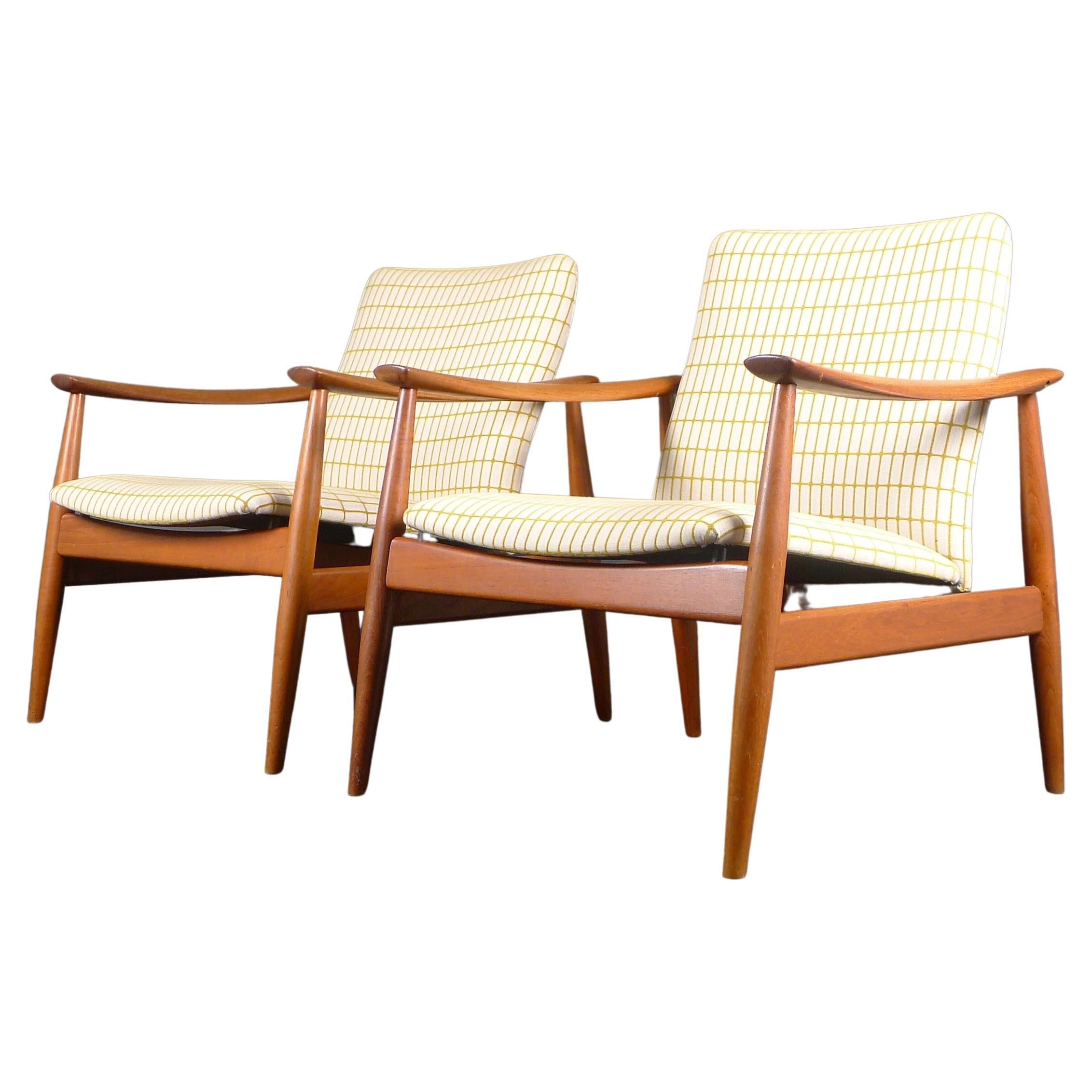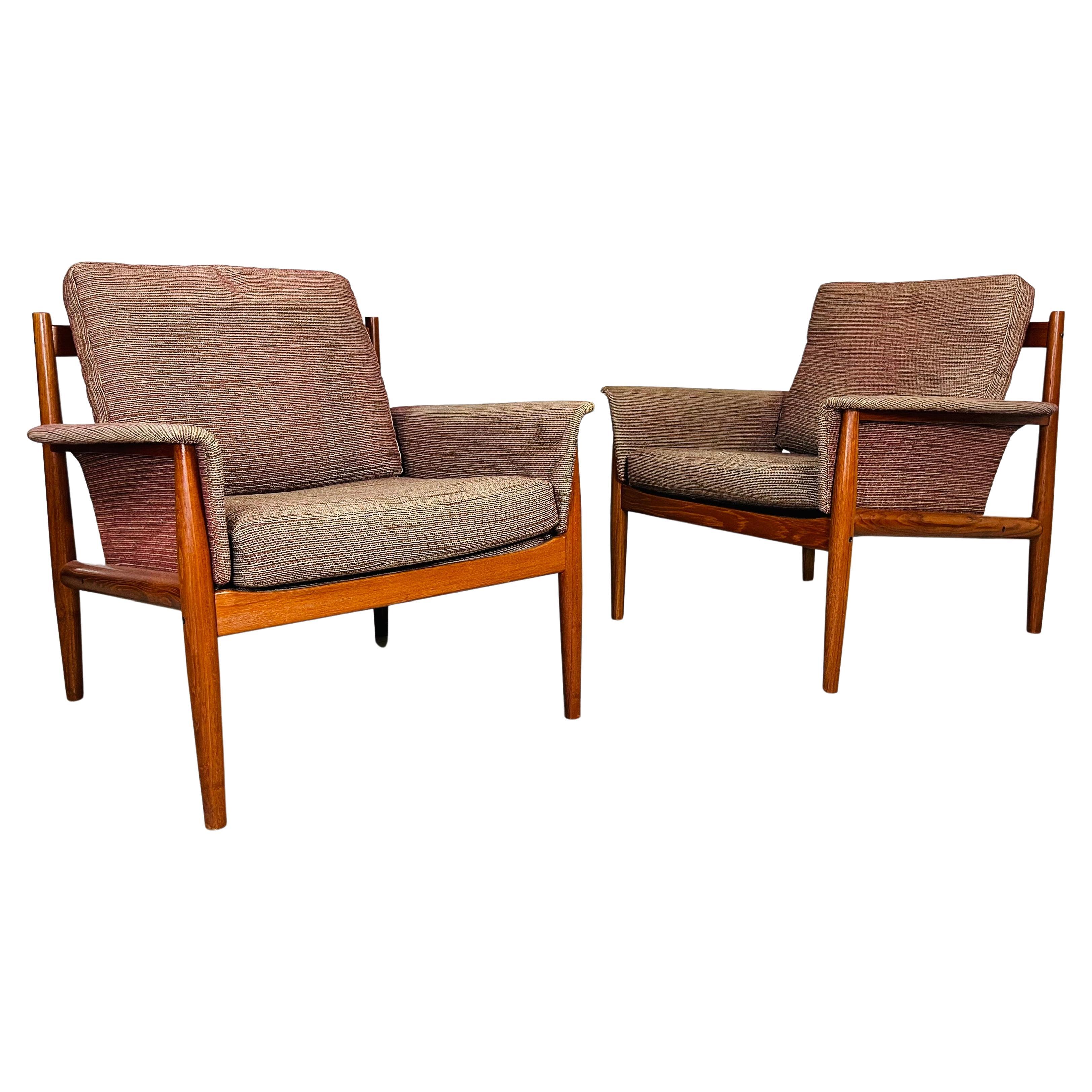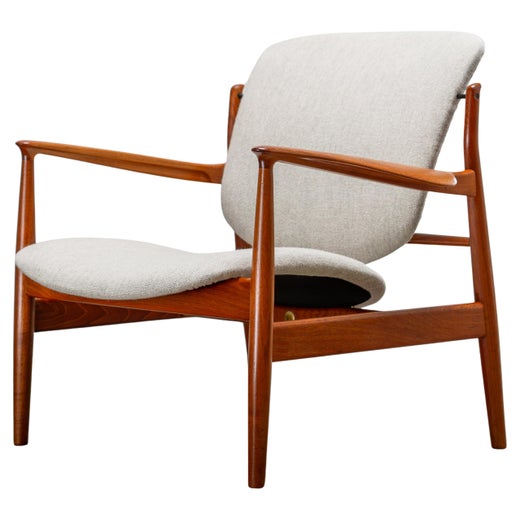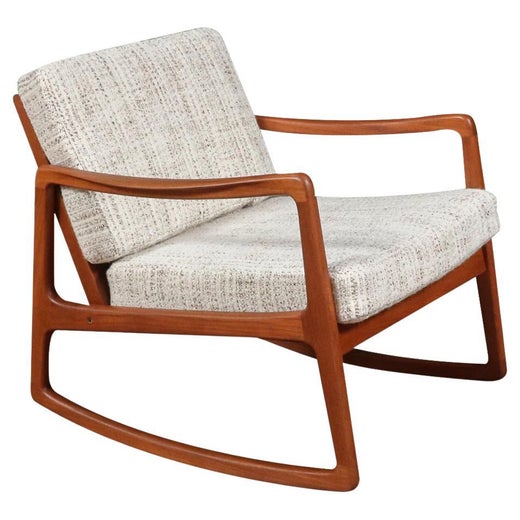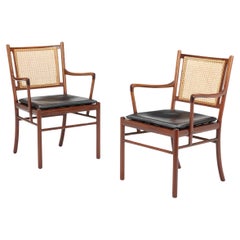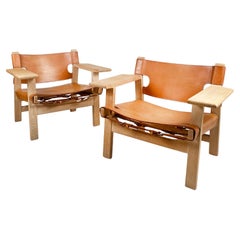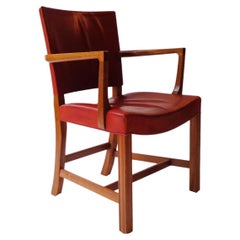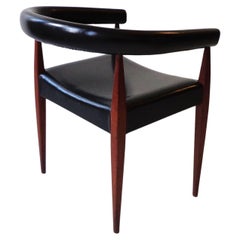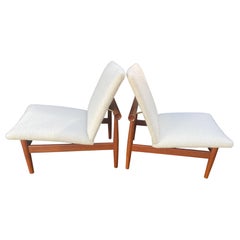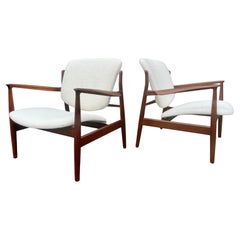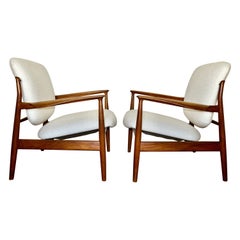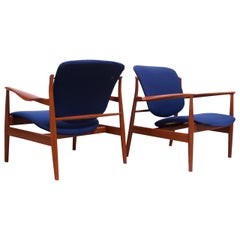Pair of Finn Juhl Japan Lounge Chairs in Teak and Bouclé Fabric for France & Son
About the Item
- Creator:France & Søn (Manufacturer),Finn Juhl (Designer)
- Dimensions:Height: 29.93 in (76 cm)Width: 25.2 in (64 cm)Depth: 29.53 in (75 cm)Seat Height: 16.15 in (41 cm)
- Sold As:Set of 2
- Style:Scandinavian Modern (Of the Period)
- Materials and Techniques:
- Place of Origin:
- Period:
- Date of Manufacture:1950s
- Condition:Wear consistent with age and use. Reupholstered in Bouclé fabric.
- Seller Location:WIJCKEL, NL
- Reference Number:1stDibs: LU8306233165332
Finn Juhl
Along with Hans Wegner, Arne Jacobsen and Børge Mogensen, Finn Juhl was one of the great masters of mid-20th-century Danish design. Juhl was the first among that group to have his work promoted overseas, bringing the character of the nation’s furnishings — and the inherent principles of grace, craftsmanship and utility on which they were based — to an international audience.
A stylistic maverick, Juhl embraced expressive, free-flowing shapes in chair, credenzas and sofa designs much earlier than his colleagues, yet even his quietest pieces incorporate supple, curving forms that are at once elegant and ergonomic.
As a young man, Juhl hoped to become an art historian, but his father steered him into a more practical course of study in architecture. He began designing furniture in the late 1930s, a discipline in which, despite his education, Juhl was self-taught, and quite proud of the fact.
Juhl’s earliest works, designed in the late 1930s, are perhaps his most idiosyncratic. The influence of modern art is clear in his 1939 Pelican chair: an almost Surrealist take on the classic wing chair. Critics reviled the piece, however; one said it looked like a "tired walrus." Juhl had tempered his creativity by 1945, when the workshop of Danish cabinetmaker Niels Vodder began to issue his designs. Yet Juhl’s now-classic NV 45 armchair still demonstrates panache, with a seat that floats above the chair’s teak frame.
Juhl first exhibited his work in the United States in 1950, championed by Edgar Kaufmann Jr., an influential design critic and scion of America’s most prominent family of modern architecture and design patrons. (Kaufmann’s father commissioned Frank Lloyd Wright’s design of the house “Fallingwater.”)
Juhl quickly won a following for such signature designs as the supremely comfortable Chieftan lounge chair, the Judas table — a piece ornamented with stylish inlaid silver plaquettes — and the biomorphic Baker sofa. After an article authored by Kaufmann on Juhl and his work appeared in the U.S.-based magazine Interiors in 1948, he began receiving American commissions.
Kaufmann commissioned Juhl to create the exhibition design for, and contribute pieces to, the 1951 edition of the Good Design shows he organized for MoMA and Chicago’s Merchandise Mart. Baker Furniture asked Juhl to design for the firm, and he produced a collection of chairs, tables and cabinets, and, later, the 1957 sofa.
Scandinavian modernist seating, such as the chairs and sofas Juhl created for Baker, became immensely popular in postwar America, as the seeds of the Scandinavian style that Juhl sowed took root and spread in the United States. Juhl and his work featured prominently in the landmark show “Design from Scandinavia,” which opened in 1954 at the Virginia Museum of Fine Arts and traveled to 24 museums in the U.S. and Canada; over three years, it was seen by more than a million people.
Juhl’s furniture — as well as his ceramics, tableware and accessories — has an air of relaxed sophistication and elegance that is unique in the realm of mid-century design.
Find vintage Finn Juhl armchairs, coffee tables, desks and other furniture for sale on 1stDibs.
France & Søn
Danish manufacturer France & Søn is best known for its prolific output of elegant mid-century modern furnishings in teak and leather, yet its multinational beginnings took shape during the 1930s.
After businessman Charles William Fearnley France (1897–1972) moved from his native England to Denmark in 1936, he began to operate a small mattress factory alongside his friend Eric Daverkosen, a Danish cabinetmaker, under the name France & Daverkosen. Shortly afterward, Daverkosen passed away, and when Denmark was invaded during the Second World War, Charles was captured and sent to a prison camp in Germany. When he was released, the British entrepreneur set out to produce furniture in the early 1950s, setting up a shop in Hillerød to manufacture the kind of sleek beech and teak goods that were gaining widespread acclaim around the world. In 1957, France’s son James joined the business, and the company changed its name to reflect the addition.
Throughout the ’50s and ’60s, France & Søn produced a stunning array — and staggering quantity — of designs, with elegant modernist lounge chairs and armchairs, teak and rosewood dining tables and other furnishings by the likes of Finn Juhl, Grete Valk, Ole Wanscher, Peter Hvidt and Orla Mølgaard-Nielsen all gracing its catalogues.
Even as there was a focus on mass production at France & Søn — and the brand doesn’t quite enjoy the same renown as fellow mid-century Danish furniture makers such as Carl Hansen & Søn — Charles France believed in making quality furniture, and the company’s offerings evoke the warmth of the handcrafted work that is typically associated with Scandinavian modernism.
In the 1960s, the company was bought by Danish designer Poul Cadovius, who folded it into the operations at CADO, a company he founded during the 1950s. Surviving examples of early work from the brand as well as modern icons by the likes of Verner Panton that followed in later years continue to be in demand.
Find a collection of France & Søn furniture on 1stDibs.
- ShippingRetrieving quote...Shipping from: WIJCKEL, Netherlands
- Return Policy
More From This Seller
View AllVintage 1960s Danish Scandinavian Modern Armchairs
Cane, Mahogany, Leather
Vintage 1960s Danish Scandinavian Modern Armchairs
Brass
Vintage 1950s Danish Scandinavian Modern Armchairs
Leather, Mahogany
Vintage 1950s Danish Scandinavian Modern Armchairs
Faux Leather, Teak
Vintage 1940s Danish Scandinavian Modern Sofas
Leather, Mahogany
Vintage 1960s Danish Scandinavian Modern Lounge Chairs
Metal
You May Also Like
Mid-20th Century Danish Scandinavian Modern Lounge Chairs
Brass
Vintage 1960s Danish Mid-Century Modern Lounge Chairs
Brass
Vintage 1950s Danish Mid-Century Modern Armchairs
Brass
Vintage 1950s Danish Mid-Century Modern Armchairs
Brass
Vintage 1950s Danish Scandinavian Modern Chairs
Upholstery, Teak
Mid-20th Century Danish Scandinavian Modern Lounge Chairs
Steel
